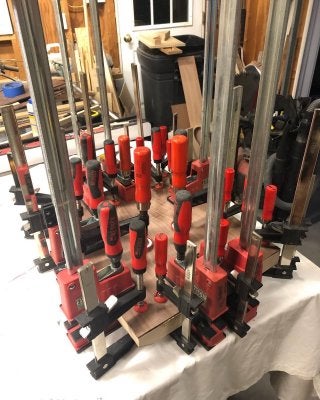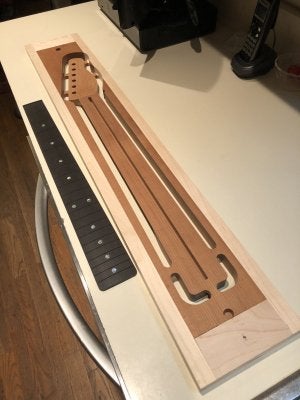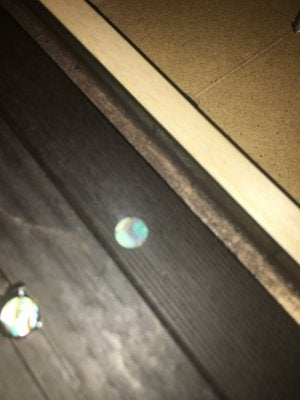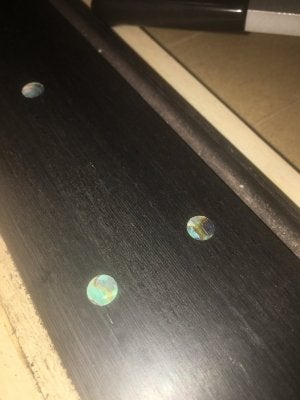jfitch45
TDPRI Member
Good afternoon everyone! I thought I would try to document my dad and I's second tele style build. This is actually our first full-fledged guitar project on his new CNC machine he got back in December, so it has taken a few months of trial and error in both design and build to get to this comfortable and 'proficient' so to speak.
I've never owned an electric guitar with humbuckers, much less a '72 Thinline with WRHBs, but I was drawn to building one to break this trend and try something new. I began by searching through Fender-Ish guitar plans and choosing my desired plan.
I imported the PDF file into AutoCAD for some fine tuning of the vectors and then into VCarve for the CNC.
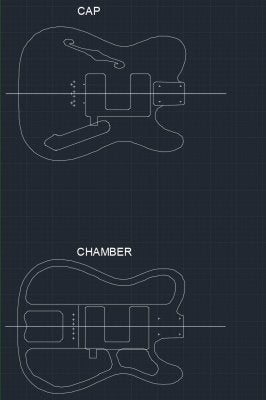
The body is ash with a walnut back strip. The drop top is also walnut. All the walnut was actually leftover scrap from a dining room table my dad and I built for my house last year. He stumbled upon the scrap in his shop just before we started the build and we thought it would be perfect for this guitar.

I don't think we had the drop top ready at this point, but we began with the pocket tool paths for the chambers.




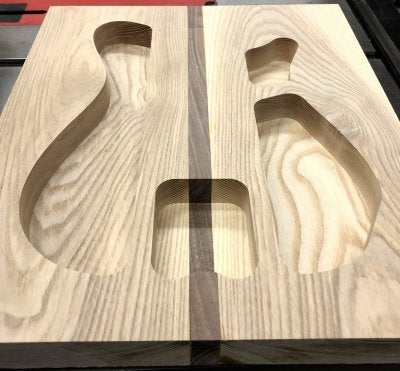
I've never owned an electric guitar with humbuckers, much less a '72 Thinline with WRHBs, but I was drawn to building one to break this trend and try something new. I began by searching through Fender-Ish guitar plans and choosing my desired plan.
I imported the PDF file into AutoCAD for some fine tuning of the vectors and then into VCarve for the CNC.

The body is ash with a walnut back strip. The drop top is also walnut. All the walnut was actually leftover scrap from a dining room table my dad and I built for my house last year. He stumbled upon the scrap in his shop just before we started the build and we thought it would be perfect for this guitar.

I don't think we had the drop top ready at this point, but we began with the pocket tool paths for the chambers.






